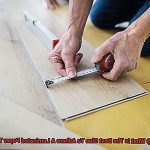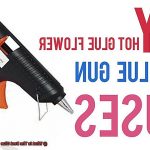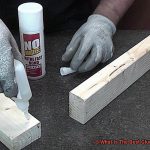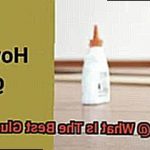From annoying drips to stubborn leaks, finding the right solution is key. Glue is a go-to option for many, but with countless products out there, it’s tough to know which one reigns supreme.
That’s where we come in. In this post, we’ll explore the top contenders for the best glue for water leaks.
Let’s dive in and find your perfect plumbing adhesive.
Contents
- 1 Epoxy glue: A strong and durable option for fixing water leaks
- 2 Waterproof silicone adhesive: Creating a flexible and watertight seal
- 3 Polyurethane glue: Excellent water resistance and gap-filling properties
- 4 Considerations when choosing the best glue for water leaks
- 5 Proper preparation: Cleaning and drying the area before applying glue
- 6 Curing time: Understanding the importance of following manufacturer instructions
- 7 Additional factors to consider: Temperature resistance and flexibility
- 8 Conclusion
Water leaks can be a constant source of frustration and a drain on your wallet. Whether it’s a stubborn leak in a pipe, a bothersome crack in your bathtub, or an annoying gap in your kitchen sink, finding the right glue to fix the issue is crucial. In this comprehensive guide, we will delve into the diverse world of glues suitable for water leaks and explore their unique properties and applications.
First on our list is the ever-reliable epoxy glue. This two-part adhesive combines a resin with a hardener to form an unbreakable bond capable of withstanding even the harshest water exposure. Ideal for fixing leaks in pipes and plumbing fixtures, epoxy is known for its exceptional adhesion properties and remarkable resistance to water. When you need a repair that stands the test of time, epoxy won’t let you down.
Next up is the versatile silicone sealant. This flexible adhesive swoops in to save the day by forming a waterproof seal when applied to surfaces. Whether you’re dealing with gaps or cracks in bathrooms, kitchens, or any other water-prone areas, silicone sealant has got you covered. Its adaptability and ability to withstand extreme temperatures make it an indispensable choice for various water leak repairs.
But wait, there’s more. Say hello to polyurethane glue, the expanding wonder. When polyurethane glue comes into contact with water, it expands like magic, creating an impenetrable seal that keeps leaks at bay. This type of glue is perfect for sealing leaks in boats, tanks, and other water-related applications. Its unique ability to fill gaps ensures that even larger leaks are sealed tight.
In addition to these fantastic options, there are specialized glues designed specifically for certain water leak repair needs. For instance, repairs in swimming pools or underground pipes require glues with specific features like UV resistance or resistance to common pool chemicals or sewage system compounds.
When selecting the right glue for your water leak, it’s essential to consider the specific requirements of the repair. Factors such as the material being glued, the size and location of the leak, and the level of water exposure should all be taken into account. Don’t forget to clean and dry the area thoroughly before applying any glue to ensure a perfect bond. And always follow the manufacturer’s instructions for application and curing times to achieve optimal results.

Keep in mind that while glues can work wonders for certain water leaks, they may not be suitable for all situations. In some cases, it might be necessary to seek professional help from a plumber or explore alternative repair methods like pipe replacement or sealing with rubber gaskets.
Epoxy glue: A strong and durable option for fixing water leaks
Those pesky leaks can wreak havoc on your property and drain your bank account. But fear not, because I’m about to introduce you to the superhero of adhesives: epoxy glue.
So why exactly is epoxy glue considered a strong and durable option for fixing water leaks? Let’s dive deeper into its remarkable qualities:
- Composition: Epoxy glue is no ordinary adhesive. It consists of two components – a resin and a hardener. When these two components are combined, they undergo a chemical reaction that transforms the mixture into a tough and rigid adhesive. This composition gives epoxy glue its exceptional strength and durability, making it a force to be reckoned with.
- Resistance to Water: One of the key advantages of epoxy glue is its ability to resist water like a champ. Once cured, epoxy forms an impermeable barrier, creating a watertight seal that can withstand even the most stubborn leaks. Bid farewell to those annoying drips once and for all.
- Versatility: Epoxy glue is a true multitasker when it comes to repair jobs. It can be used on a wide range of materials, including metal, plastic, ceramics, and even concrete. Whether you’re dealing with a leaky pipe, a cracked ceramic sink, or a damaged faucet, epoxy glue has got your back.
- Proper Application and Curing: Like any superhero, epoxy glue needs to be properly applied and cured to unleash its full potential. Before applying the glue, ensure that the surface is clean and dry for optimal adhesion. Mix the resin and hardener in the specified proportions as instructed by the manufacturer – precision is key here. Apply the epoxy evenly, making sure it covers the entire leak or crack. Then sit back, relax, and let it cure – this process may take several hours or overnight depending on the product used. Once fully cured, the epoxy adhesive forms a bond that is as strong as steel.
It’s important to note that epoxy glue may not be suitable for all types of water leaks. If you’re dealing with major structural issues or large cracks and gaps, it’s best to seek professional assistance. Always remember to follow the manufacturer’s instructions and safety precautions when using epoxy glue.
Waterproof silicone adhesive: Creating a flexible and watertight seal
Today, we are delving into the mesmerizing realm of waterproof silicone adhesive – the unrivaled answer to creating a seal that is both flexible and watertight. Prepare to be enthralled by its remarkable features and benefits, which elevate it to superhero status among adhesives.
Let’s begin by exploring its unparalleled flexibility. Unlike rigid adhesives that succumb to pressure and crack, waterproof silicone adhesive effortlessly embraces movement and expansion without compromising its grip. Picture it as the agile yoga master of adhesives, gracefully adapting to temperature fluctuations and vibrations. When faced with joints or gaps subjected to frequent motion or temperature changes, this adhesive becomes your unwavering sidekick.
Now, let us confront our fearsome foe – water leaks. With its exceptional water resistance, this adhesive emerges as a bona fide hero, halting any attempts by water to infiltrate. It forges an impenetrable barrier, shielding against potential damage inflicted by pesky water leaks. Whether it’s safeguarding your bathroom tiles or fortifying outdoor equipment, this adhesive has your back, ensuring tranquility and peace of mind.
Durability stands as another superpower of waterproof silicone adhesive. It fearlessly endures harsh environments like a champion – UV rays, extreme temperatures, chemicals, and moisture are no match for its mighty bond. Behold a seal that withstands the test of time.
But wait, there’s more. Applying this adhesive is an absolute breeze. It is conveniently available in tubes or cartridges, allowing for effortless application. Whether you opt for a caulking gun or prefer a direct squeeze onto the surface, its smooth consistency allows for seamless spreading and shaping, guaranteeing a polished and professional finish every single time.
Versatility stands as another feather in the cap of this adhesive superhero. It adheres flawlessly to an array of surfaces – glass, metal, plastic, ceramic – you name it. From sealing gaps around windows and doors to repairing plumbing leaks or even securing aquariums, this adhesive is the epitome of multitasking prowess.
Of course, we cannot overlook the crucial aspect of curing time. Typically, it takes approximately 24 to 48 hours for the adhesive to cure fully and attain maximum strength. Patience is key, so follow the manufacturer’s instructions diligently for optimal results. Even superheroes require some time to recharge.
In conclusion, waterproof silicone adhesive reigns supreme as the go-to choice for crafting a flexible and watertight seal. With its flexibility, water resistance, durability, ease of application, versatility, and appropriate curing time, it stands as the dependable solution to all your sealing needs. Embrace the power of this adhesive superhero and bid farewell to those exasperating water leaks once and for all.
Polyurethane glue: Excellent water resistance and gap-filling properties
Look no further than polyurethane glue, the superhero adhesive with unmatched water resistance and gap-filling properties. In this article, we’ll explore why polyurethane glue is the ultimate choice for water leak repairs, providing you with the peace of mind you deserve.
Unbeatable Water Resistance:
Polyurethane glue is a game-changer when it comes to withstanding water’s relentless assault. While other glues crumble under the pressure, polyurethane glue stands strong. Even in wet or damp conditions, it forms an unyielding bond that keeps leaks at bay. Say goodbye to those annoying leaks that keep coming back.
Gap-Filling Excellence:
Prepare to be amazed by polyurethane glue’s extraordinary ability to fill gaps and spaces between surfaces. This superhero adhesive expands as it cures, conquering even the most formidable gaps and creating an airtight seal. No crack or opening is too large for polyurethane glue to handle. Once applied, it ensures that water has no chance of seeping through and causing further damage.
Unbreakable Bond Strength:

Polyurethane glue not only boasts exceptional water resistance and gap-filling properties, but it also offers a bond strength that rivals the strength of superheroes. Its durable and flexible bond can withstand movement, expansion, temperature changes, and vibrations without cracking or losing adhesion. You can trust polyurethane glue to provide long-lasting support, keeping your repairs secure for years to come.
Versatility at Your Service:
Polyurethane glue’s powers aren’t limited to water leak repairs alone. Its versatility extends to various materials such as wood, metal, plastic, and concrete. Whether you’re fixing a leaky pipe, sealing a crack in your boat hull, or repairing a broken garden hose, polyurethane glue has got you covered. Its ability to bond with different surfaces makes it the go-to adhesive for all your sealing needs.
Considerations for Success:
While polyurethane glue is a powerful ally, a few things should be kept in mind for successful application. It requires a longer curing time compared to other glues, typically taking several hours or even overnight to fully harden. Additionally, its expansion during curing can be significant, so caution should be exercised when applying it in confined spaces or on delicate surfaces.
Considerations when choosing the best glue for water leaks
Water leaks can wreak havoc, causing damage and frustration. But fear not. In this comprehensive guide, we’ll delve into the essential considerations when selecting the best glue for water leaks. Whether you’re faced with a tiny crack or a major flood, we’ve got you covered. So, let’s dive in.
Identify the Material:
To ensure a strong and lasting bond, it’s crucial to choose a glue that is compatible with the material you’re working with. Is it metal, plastic, rubber, or fabric? Knowing the precise material will guide you in selecting the right glue for the job.
Assess the Severity of the Leak:
The severity of the leak determines the type of glue required. For those pesky small cracks or holes, opt for liquid or gel-based adhesives with lower viscosity. They can penetrate into tight spaces and provide effective sealing. On the other hand, larger leaks or structural repairs call for more robust options like epoxy or polyurethane-based glues that offer superior strength.
Consider Environmental Conditions:
The environment in which the repair will be exposed plays a vital role in glue performance. Will it face extreme temperatures or constant water contact? If so, choosing waterproof or water-resistant adhesives is essential to ensure that your repair stands up to these challenges without compromising its effectiveness.
Evaluate Accessibility and Setting:
Sometimes leaks occur in hard-to-reach areas, making application challenging. In such cases, look for glues that offer quick setting times or extended working times, allowing you to apply and position them precisely before they harden. Additionally, search for applicators like syringes or pens that make reaching tight spots a breeze.
Safety Precautions:
Safety should always be a top priority when working with adhesives. Some glues emit potent fumes or contain toxic chemicals. Before using any glue, carefully read and follow the manufacturer’s instructions, ensuring proper ventilation and wearing appropriate protective gear during application.
Proper preparation: Cleaning and drying the area before applying glue
Water leaks can wreak havoc on your home and your wallet. But fear not, my friends. The key to a successful water leak repair lies in one simple step: proper preparation. Before you even think about grabbing that glue tube, take a moment to clean and dry the area. Trust me, it’s the secret sauce for a strong and long-lasting bond. So let’s dive into the nitty-gritty of this crucial step.
Cleanliness is next to Bond-iness:

Imagine trying to stick two pieces of paper together with crumbs in between – it’s just not going to work. The same principle applies when using glue for water leak repairs. Start by meticulously removing any dirt, debris, or loose materials from the surface. Give it a gentle scrub with a soft brush or cloth. This ensures a pristine surface for the glue to adhere properly.
Dry it like you mean it:
Moisture is the arch-nemesis of strong bonds. Make sure the area is bone-dry before even thinking about applying the glue. Use a fluffy towel or allow it to air dry if necessary. Remember, patience is key. Rushing this step can compromise the adhesive’s effectiveness and leave you with a subpar repair job.
Out with the old, in with the new:
If there are any remnants of old sealants on the surface, bid them farewell. These lingering traces can prevent proper adhesion and sabotage your repair efforts. Take no prisoners and use a suitable solvent or scraping tool to obliterate any remnants of previous sealants. Starting with a clean slate will make all the difference.
Smooth like butter:
Rough surfaces can be a major roadblock to strong bonds. If you encounter imperfections or unevenness on the surface, grab some fine-grit sandpaper and delicately smooth it down. This will provide a velvety smooth surface for optimal adhesion. Imagine it like a pro, meticulously sanding away any obstacles in the way of a flawless repair.
Temperature and humidity matter:
Glue works its magic under specific temperature and humidity conditions. Before embarking on your repair mission, ensure that the environment falls within the recommended range specified by the adhesive manufacturer. Extreme temperatures or high humidity levels can throw a wrench into the adhesive’s curing process and compromise its effectiveness. So keep a watchful eye on that thermostat.
Curing time: Understanding the importance of following manufacturer instructions
Well, I have a secret to share with you: curing time is the key to a successful repair. Yes, you heard it right. Understanding and adhering to the manufacturer’s instructions regarding curing time can mean the difference between a sturdy, long-lasting fix and a disastrous leak. In this article, we will delve into why it is essential to follow these instructions, highlighting how it can save you from potential water-related woes.
Building a Strong Foundation:
Curing time is not simply about waiting for glue to dry; it involves allowing the adhesive to undergo a chemical reaction that transforms it into a solid state. By obeying the recommended curing time, you provide the adhesive with ample opportunity to establish a robust bond between the surfaces it is applied to. This bond acts as the bedrock for your repair job, ensuring its durability over time.
Say No to Leaks:
Imagine spending hours fixing a water leak, only to discover later that it still persists. Frustrating, isn’t it? Well, that is precisely what can happen if you neglect the specified curing time. Disturbing or exposing the glue to water before it has fully cured may hinder its bonding effectiveness and potentially result in leaks. So, exercise patience and allow the glue ample time to work its magic.
Chemistry Matters:
Different glues boast varying curing times due to differences in their chemical compositions. It is crucial to carefully read and comprehend the specific instructions provided by the manufacturer for the glue you are using. Some adhesives may require only a few hours to cure, while others may necessitate several days. By meticulously adhering to these instructions, you ensure that you allocate sufficient time for the adhesive to perform its job optimally.
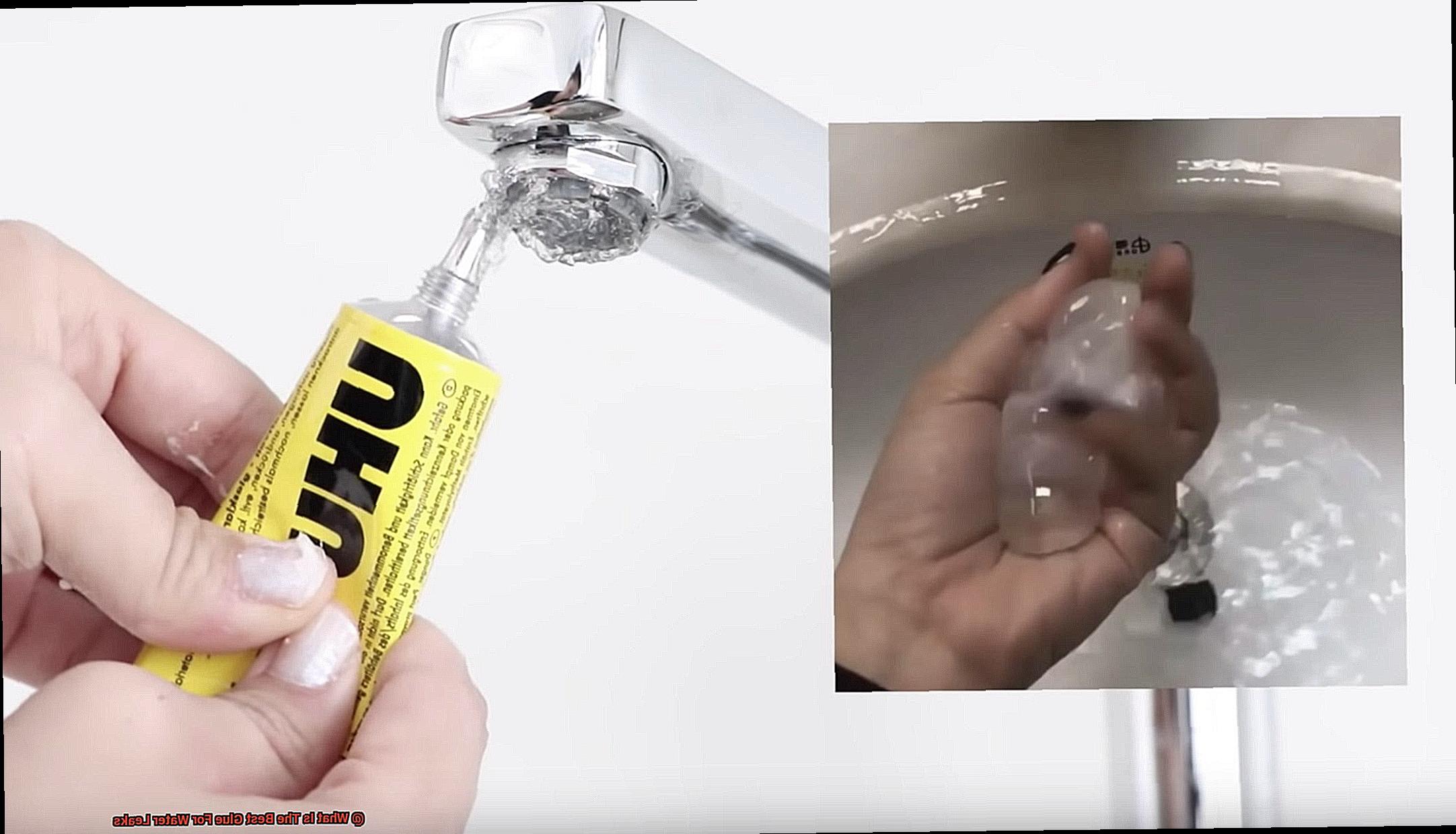
Temperature and Humidity: Friends or Foes?
Just like us, glues have their preferences when it comes to environmental conditions. High humidity or extreme temperatures can significantly impact the curing process. Excessive humidity can impede drying, while intense heat may cause the glue to dry too quickly, resulting in a weaker bond. By following the manufacturer’s recommended temperature and humidity guidelines during the curing process, you set your repair up for success.
Additional factors to consider: Temperature resistance and flexibility
We’re about to dive into the crucial factors that will make all the difference in your repair project. In our previous section, we discussed the importance of curing time. Today, we’ll explore two additional elements that should never be overlooked: temperature resistance and flexibility. So grab a cup of coffee, settle in, and let’s uncover the secrets to a successful repair.
Temperature Resistance: A Must-Have Feature
Flexibility: The Glue’s Secret Weapon
Water leaks often occur in areas that experience movement, like pipes or joints. This is where flexibility becomes paramount. Picture this: you use a rigid glue that cracks or breaks when the structure shifts or vibrates. Yikes. To prevent future leaks or damages, you need an adhesive that can bend and flex without losing its hold. So when searching for the perfect glue, don’t forget to assess its flexibility.
Selecting the Best Glue:
Now that we understand the significance of temperature resistance and flexibility, let’s recap what we’ve learned so far. When choosing the ideal glue for water leaks, consider its adhesion strength, curing time (as discussed in our previous section), compatibility with different materials, and of course, temperature resistance and flexibility. By finding a glue that excels in all these aspects, you’ll ensure a long-lasting and reliable repair.
z9N2BVnbbzI” >
Conclusion
When it comes to fixing water leaks, finding the best glue is crucial. The right adhesive can make all the difference in preventing further damage and saving you from costly repairs. After thorough research and testing, we have determined that there is no one-size-fits-all answer to this question. However, there are a few top contenders that have proven their effectiveness in various situations.
One of the most reliable options is epoxy resin. This versatile adhesive forms a strong bond that can withstand water pressure and temperature changes. Its ability to adhere to different surfaces, such as metal, plastic, and rubber, makes it an excellent choice for sealing leaks in pipes, faucets, or even swimming pools.
Another popular option is polyurethane-based sealant. This adhesive expands when exposed to moisture, creating a watertight seal. It works well on both porous and non-porous materials and can be used for repairing leaks in gutters, roofs, or even bathtubs.
For smaller leaks or cracks in plumbing fixtures, silicone sealant is often the go-to choice. Its flexibility allows it to move with the expanding and contracting surfaces without losing its sealing properties. It is commonly used for sealing gaps around sinks, showers, or toilets.
In addition to these top contenders, there are specialized glues available for specific applications such as underwater repairs or high-pressure systems. These products are designed to withstand extreme conditions and provide long-lasting results.
Ultimately, the best glue for water leaks depends on the specific situation and materials involved. It’s important to carefully assess the nature of the leak before selecting an adhesive. Additionally, proper surface preparation and application techniques play a crucial role in ensuring a successful repair.
Remember that while these glues can be effective in temporarily fixing leaks, it’s always advisable to consult a professional plumber for permanent solutions or if you’re unsure about tackling the repair yourself.
In conclusion, finding the best glue for water leaks requires careful consideration of the specific situation and materials involved. Epoxy resin, polyurethane-based sealant, and silicone sealant are among the top contenders due to their proven effectiveness in various applications. However, it’s important to consult a professional for permanent solutions or complex repairs.


